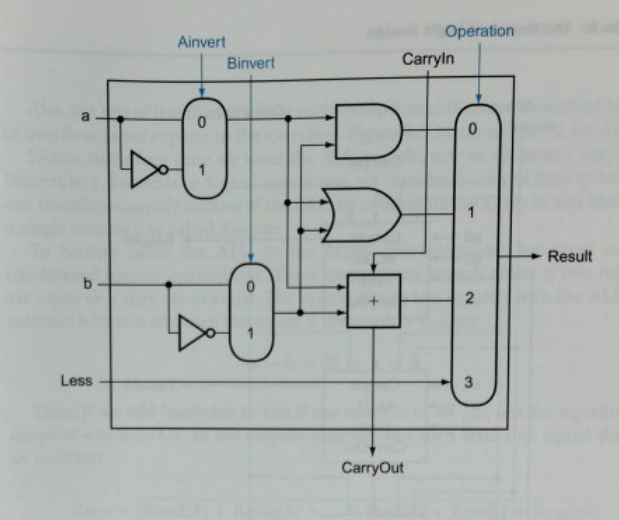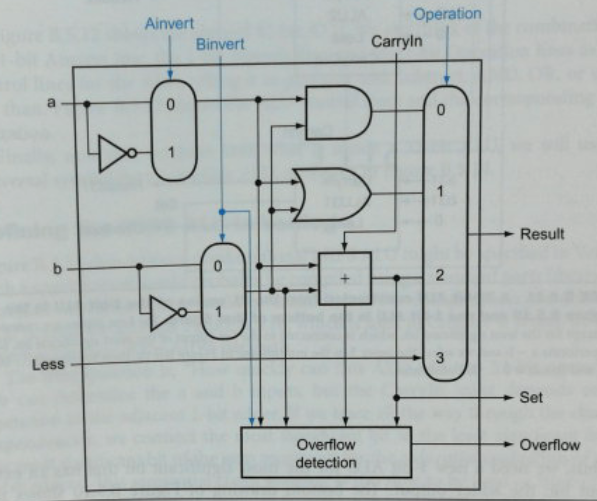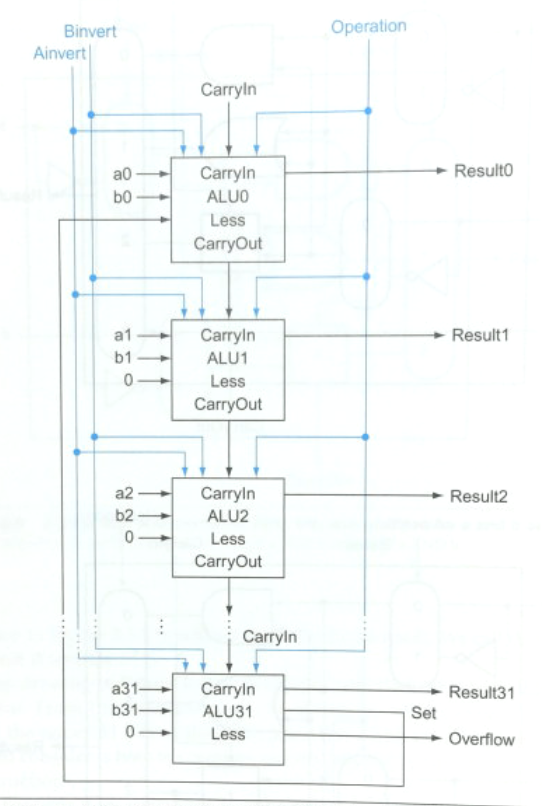$\require{cancel}$
Finishing the ALU
- I am taking this from Patterson and Hennessy
- They spend quite a bit of time developing this.
- For a simple mips machine we need
- Add and subtract
- And, or,
a + b (nand),
a · b(nor)
- And a < b
- So they develop an 1 bit alu

- There are four data lines
- a, b, caryin as we have discussed
- Less is for <
- We want a 1 if a < b
- We will subtract, and bring the MSB of the result back.
- We will see this in a minute.
- There are three control lines.
- Ainvert is a one bit line to invert the a bit.
- Binvert is a one bit line to invert the b bit.
- Operation is a two bit line to select the output.
- There are two output lines
- The one bit result selected by the operation
- A carry out
- The ALU for the MSB is a bit different
-

- Note the overflow detection hardware
- The rules for two's complement are easy
| Operation | A | B | Overflow? |
|---|
| A+B | + | + | negative result |
| A+B | - | - | 0 or positive result |
| A+B | - | + | Not possible |
| A+B | + | - | Not possible |
| A-B | - | - | Not possible |
| A-B | + | + | Not possible |
| A-B | - | + | 0 or positive result |
| A-B | + | - | negative result |
- Plus the "set bit" which is the MSB of any computation.
- Again, if we subtract and the first was smaller, we will have a 1 here.
- Putting it together, we have
-

- The set bit from the last ALU becomes the less bit for the first.
- All other less bits are 0.
- Note, we could control this from the CU with the following
-
| Ainvert | Binvert | Operation | Function |
|---|
| 0 | 0 | 00 | (0000) and |
| 0 | 0 | 01 | (0001) or |
| 0 | 0 | 10 | (0010) add |
| 0 | 1 | 10 | (0110) subtract |
| 0 | 1 | 11 | (0111) less |
| 1 | 1 | 00 | (1100) nor |
| 1 | 1 | 00 | (1101) nand |


